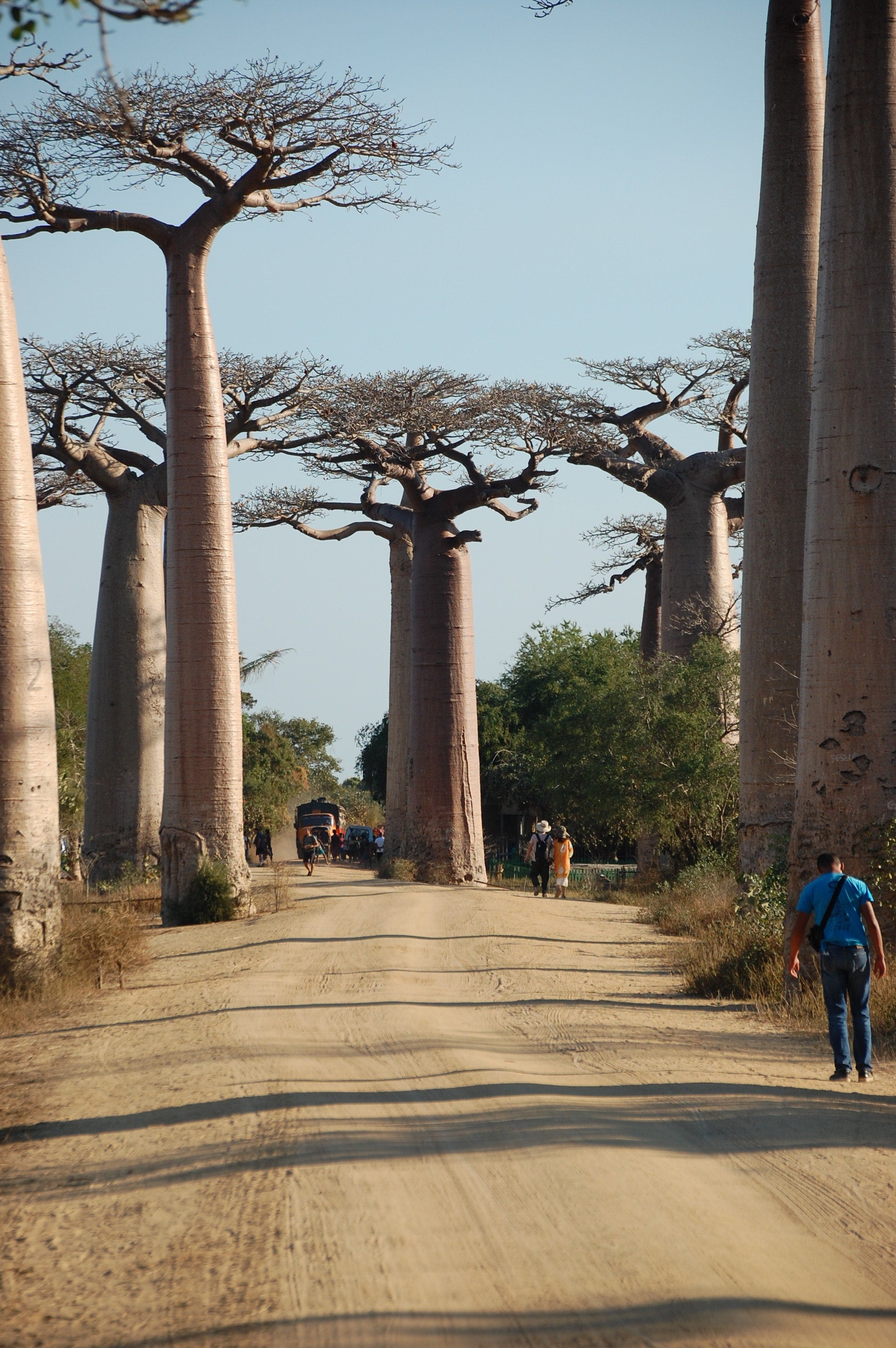Adonsonia Digitata (Baobab) Oil
This exquisite organic oil is cold pressed from the fruit seeds on the African Baobab tree. To locals, the Baobab is known as the 'Tree of Life' as the trees commonly live for 500 years. Some have reached the age of 5,000 years old. Rich in essential fatty acids, vitamins A and E, and phytosterols, baobab oil absorbs quickly and is especially beneficial for dry skin. The baobab oil included in KYPRIS products is organic and sustainably procured.
Classification
______________________________________________________________________________
Baobab
Kingdom Plantae Family Malvaceae
Phylum Traceophya Genus Adansonia
Class Magnoliopsida Species Digitata
Order Malvales
Latin Name Adonsonia Digitata
Parts Used
______________________________________________________________________________
In KYPRIS products the fruit seeds are cold pressed to make oil. However, locals use all parts of the tree, including the bark, leaves, and seeds to make food, medicine, and even shelter as the trees can grow up to 30 meters tall [1]. The leaves can be boiled and eaten like spinach, the fruit pulp can be consumed and contains more vitamin C than oranges [1]. The roots can be used to make dye, and the bark can be used to make baskets and ropes [2].
Where Baobab Grows
______________________________________________________________________________
The Baobab tree is native to the arid savannas of Africa and India. It grows in 32 African countries and is the national tree of Madagascar [2].
Botanical Character
______________________________________________________________________________
The Baobab tree is referred to as “abre a palabre” by the locals, which means the place where elders meet to resolve problems [3]. The Baobab tree is also commonly called the “Tree of Life” due to its usefulness to the community as well as being a symbol for fertility [2]. Infertile women place their hands on the tree and make a promise to either name their child after the tree, or offer a sacrifice in return for fertility [4].
Discovery of Baobab
______________________________________________________________________________
The binomial name of Baobab (A. digitata) was given by well known botanist Carl Linnaeus who honored Michel Adanson with the generic name for his work on describing Baobab trees done in Senegal in the eighteenth century [5].
Traditional Uses of Baobab
______________________________________________________________________________
The Baobab tree has been primarily used by local communities for medicine, cosmetic applications, and as a source of food [3]. The seeds are rich in protein and are commonly eaten raw or roasted, and the oil is sometimes used in food preparation as a sauce or paste [3]. Authors refer to the tree as a small pharmacy because of its large variance of uses [3]. The leaves are prepared in a variety of different ways in efforts to treat illnesses like fever, asthma, malaria, and gingivitis [1].
Modern Applications
______________________________________________________________________________
The global demand for Baobab oil has only recently popped up, starting about 15 years ago. Now, in Zimbabwe alone, about 20,000 litres of oil worth US$100,000 is produced annually [3]. Most of the oil is used to produce soap, toothpaste, and cosmetics [3].
Challenges
______________________________________________________________________________
Recently, researchers have noted falling and dying Baobab trees which have been alive for thousands of years [6]. These researches suspect the cause to be climate change, and also believe the Baobab trees to be more susceptible to it because of their large dimensions [6]. Because of unordinary long droughts and rising temperatures, the trees are unable to support the weight of their trunks [6].
Scandals
______________________________________________________________________________
African legend says that when animals and people were put on Earth, the creator gave each of them a tree [7]. The hyena was late and only the Baobab tree was left to distribute because no one else wanted it [7]. This angered the hyena who planted the tree upside down giving it the look as if its roots are in the air and its branches are underground [7].
Scientific Appreciation
______________________________________________________________________________
According to a recent study done on the safety and efficacy of Baobab seed oil, “Baobab oil has good cosmetic potential with its non-irritating, hydrating, moisturizing and occluding benefit on the skin.” [3]. Additionally, the study concluded that the “unique ratio of saturated and unsaturated fatty acids present in the oil renders it an oil which may have pharmacological properties that could be highly significant in the cosmetic industry when topically applied.” [3].
Ecstatic Applications
______________________________________________________________________________
There are many legends and folklore stories told about the baobab tree. One particular legend says that the trees possess souls or are inhabited by ancestral spirits. Some believe the trees walk around at night, but have to stay in place during the day [8].
This information has not been evaluated by the Food and Drug Administration. This product is not intended to diagnose, treat, cure, or prevent any disease. For educational purposes only.
Citations
[1] Rahul, Jitin, et al. “Adansonia Digitata L. (Baobab): a Review of Traditional Information and Taxonomic Description.” Asian Pacific Journal of Tropical Biomedicine, No Longer Published by Elsevier, 19 Mar. 2015, www.sciencedirect.com/science/article/pii/S222116911530174X.
[2] V., Namratha, & Sahithi P.. "Baobab: A Review about “The Tree of Life”." International Journal of Advanced Herbal Science and Technology [Online], 1.1 (2013): pp. 20-26. Web. 3 Jun. 2019
[3] Komane, Baatile M, et al. “Beauty in Baobab: a Pilot Study of the Safety and Efficacy of Adansonia Digitata Seed Oil.” Revista Brasileira De Farmacognosia, Elsevier, 12 Aug. 2016, www.sciencedirect.com/science/article/pii/S0102695X16300874#bbib0035.
[4] “6000-Year-Old Baobab Tree in Senegal.” Matter Of Trust, matteroftrust.org/6000-year-old-baobab-tree-in-senegal/.
[5] Eggli, Urs, and Leonard E Newton. Etymological Dictionary of Succulent Plant Names. Springer, 2010.
[6] Nuwer, Rachel. “Last March of the 'Wooden Elephants': Africa's Ancient Baobabs Are Dying.” The New York Times, The New York Times, 12 June 2018, www.nytimes.com/2018/06/12/science/baobabs-climate-change-drought.html.
[7]Sabine. “The Baobab Tree - Mysteries and Legends in Africa.” The Travelling Chilli, 5 June 2017, www.thetravellingchilli.com/baobab-tree-mysteries/.
[8] Springer, Dordrecht. “Folklore and Tradition.” The Baobabs: Pachycauls of Africa, Madagascar, and Australia, 2008.
[picture] “The Baobab Tree: Africa's Iconic ‘Tree of Life.’” Aduna, cdn.shopify.com/s/files/1/0447/0453/files/thumb_aduna_baobab_tree.jpg?5820.
KYPRIS products that contain Baobab Oil:
- Beauty Elixir I - 1,000 Roses
- Beauty Elixir II - Balancing Flowers
- Beauty Elixir III - Prismatic Array


